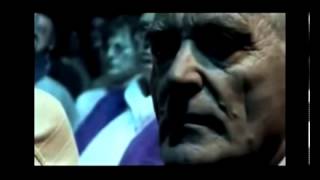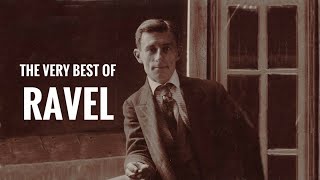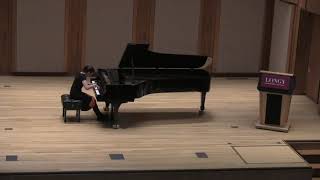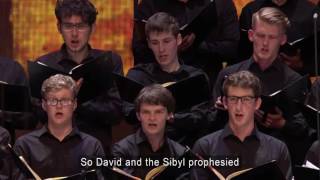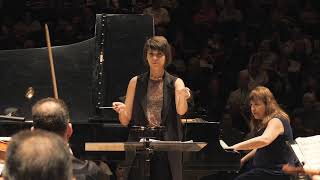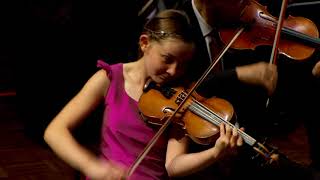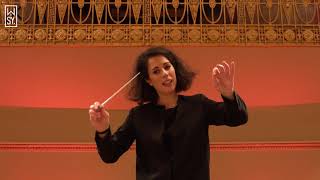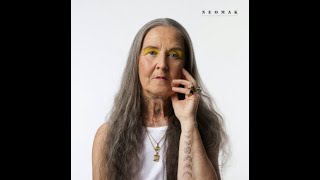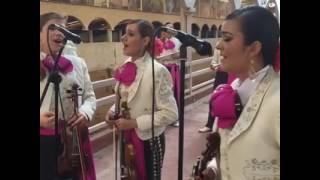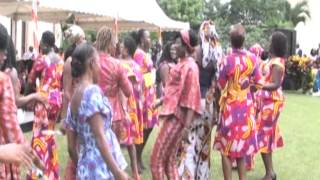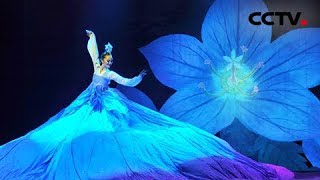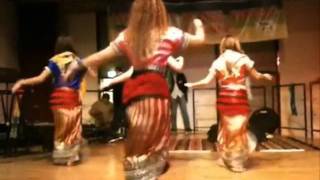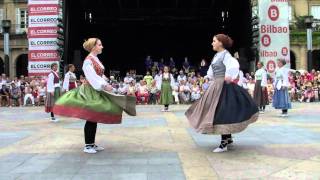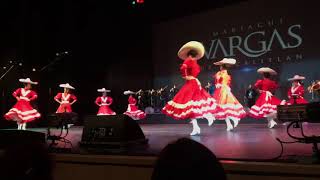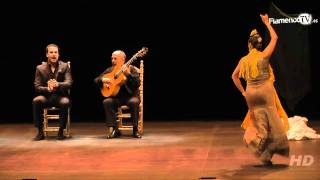March 3, 1976, the Vitoria/Gasteiz massacre is commemorated.
March 7, 1875, Maurice Ravel is born.
On March 8, International Women's Day is celebrated.
Every March 8, International Women's Day (previously called International Working Women's Day) commemorates the struggle of women for their participation in society and their full development as a person, on an equal footing with men. The numeronym "8-M" is also used to refer to this commemoration in reference to the day and month in which it is commemorated.
Although throughout the year we try to give women equal treatment, which is often not easy for us (especially when it comes to orchestra conductors, since only 10% of conductors in the world are women) in the celebration of International Women's Day we have tried to give it preferential and almost exclusive treatment as a denunciation of the apartheid that has suffered throughout the centuries in the world of music and that unfortunately continues to suffer in this and in many other places and human activities.
Recommended music videos for initiation to classical music
Lluis Llach (1948) is a Catalan singer-songwriter, promoter along with other colleagues of the Catalan Nova cançó and author of various protest songs during the Franco era. In 1969 he gave a solo recital at the Palau de la Música , demonstrating his popularity among the population of all ages. In 1973 he performed at the Olimpia in Paris with great success among the public and critics; At this time he also performed in Switzerland, Germany and Mexico . In 1976, after Franco 's death, he gave three recitals at the Montjuïc Sports Palace. In 1979 he was the first non-operatic singer to perform at the Liceo de Barcelona and in 1985 he filled the Camp Nou with more than 100,000 spectators. In 2007 he decided to end his career in a concert given in Verges (Girona).
Bells to Morts . On March 3, 1976, at 5:00 p.m. and ten minutes, the National Police evicted the Church of San Francisco de Asís in Vitoria-Gazteiz where 4,000 striking workers were meeting; To do this, he used tear gas, rubber bullets and real fire, killing five people and injuring more than one hundred and fifty; In the protests that followed the massacre, their repression ended the lives of two other people. The facts, despite these 48 years, have still not been prosecuted or investigated. In memory of this massacre, Lluis Llach composed the song that we offer today, performed by himself.
Maurice Ravel (1875-1937), born in Ziburu (Ciboure, Basque Country in France), inherited his meticulous work from his father, an engineer of Swiss origin, and his passion for music from his mother, born in Mendata (Bizkaia). with the folk songs with which he adorned his childhood. A few months after he was born, the family moved to Paris , where at the age of six he began his piano studies. At the age of 14 he entered the Paris Conservatory where he had the opportunity to study with Gabriel Fauré . His first works already show us a strong personality and an independent spirit. In 1901 he premiered his Jeux d'eau , a piano work with which he began to make his way in the musical circles of Paris where the influence of Ravel on Debussy or vice versa was discussed.
Meanwhile, his fame was already established, to the point that Sergei Diágilev , creator of the Russian Ballets that in those years were in full effervescence, commissioned the ballet Daphnis et Chloé , Ravel 's longest work, whose premiere was unevenly received, which caused a drop in morale in the composer. While in the middle of World War II , he learned of the death of his mother, a fact that had a profound impact on him; After these sad events, Ravel continued working and premiering different works, among which was another masterpiece, the symphonic poem La Valse . In 1921 he lived until his death in a mansion 30 kilometers from Paris , where, despite the composer's reserved character, eminent musicians and intellectuals met.
In 1928 he toured Canada and the USA where he experienced the jazz that he liked so much and contacted Gershwin . Upon his return to Paris he composed the work that would make him most famous, the Bolero . In 1932 he wrote his two piano concertos: Concerto for the Left Hand and Concerto in G. Starting in 1933 he began to have difficulties with psychomotor skills; difficulties that grew until he died at the age of 62. His legacy consists of works for piano for 2 and 4 hands, chamber music, orchestral music, concertantes, songs for voice and accompaniment, an opera and a lyrical fantasy for soloists, choir and orchestra. He reduced his own orchestral works to piano, as well as orchestrated works written for piano by himself and others, among which Musorgsky 's Pictures at an Exhibition stand out.
The very Best With this video we offer a select florilegium of his most outstanding works: 1 (00´00´´) BOLÉRO .-. 2 (14´40´´) PAVANE POUR UNE INFANTE DEFUNTE .-. 3 (20´24´´) CONCERTO POUR PIANO IN G MAJOR: I Mov Allegramente .-. II Mov (28'25) Adagio assai .-. III Mov (38´05´´) Presto .-. 4 (41´47´´) RHAPSODIE ESPAGNOLE: I Prélude à la nuit. Très modéré .-. II (45'56'') Malagueña. Assez vif .-. III (48'12'') Habanera. Assez lent et d'un rythme las .-. IV (50´50´´) Fair. Assez anime .-. 5 (57´05´´) CHANSONS MADÉCASSES: I Nahandove .-. II (1h 2´07´´) Aoua .-. III (1h 6´12´´) Il est doux .-. 5 (1h 10´03´´) FIVE MÉLODIES POPULAIRES GRECQUES: I Chanson de la mariée .-. II (1h 11´40´´) Là-bas, vers l'église .-. III (1h 13´20´´) Quel galant m'est comparable .-. IV (1h 14´26´´) Chanson des cueilleuses de lentisques .-. V (1h 17´22´´) Tout gai! .-. 6 (1h 18´11´´) DON QUICHOTTE À DULCINÉE: I Chanson romanesque .-. II (1h 20´04´´) Chanson épique .-. III (1h 23´10´´) Chanson à boire .-. 7 (1h 24´52´´) LA VALSE .-. 8 (1H 35´53´´) TZIGANE, RHAPSODIE DE CONCERT .-. 9 (1h 44´55´´) POPULAR CHANTS: no. 2, Chanson française. "Jeanneton où irons-nous garder" .-. 10 (1h 47´32´´) 2 HEBREW SONGS, no. 1, Kaddisch.-. 11 (1h 52´31´´) GASPARD DE LA NUIT .-. 12 (1h 59´4´´) TZIGANE, RHAPSODIE DE CONCERT .-. 13 (2h 8´15´´) QUATUOR À CORDES IN F MAJOR: I Allegro moderato .-. II (2h 15´44´´) Assez vif, très rythmé .-. III (2h 21´50´´) Three lent .-. IV (2h 30´40´´) Vif et agité .-. 14 (2h 35´28´´) JEUX D'EAU .-. 15 (2h 40´01´´) MIROIRS, IV Dawn of the funny man .-. 16 (2h 46´02´´) MA MÈRE L'OYE, III Laideronnette, Impératrice des pagodes .-. 17 (2h 49´11´´) TOMBEAU DE COUPERIN, III Forlane .-. IV (2h 54´01´´) Rigaudon .-. 18 (2h 57´08´´) SONATINE, I Modéré .-. II (3 h 0´51´´) Mouvement de menuet .-. III (3h 4'01'') Anime .-. 19 (3h 7´35´´) VALSES NOBLES ET SENTIMENTALES, I Modéré, très franc .-. 20 (3h 8´48´´) CONCERTO POUR LA MAIN GAUCHE.
Fanny Mendelssohn (1805-1847) was an early Romantic composer and pianist (1810-1910). His compositions include a piano trio, a piano quartet, an orchestral overture, four cantatas, more than 125 piano pieces, and more than 250 lieder, most of which were published posthumously. Although she was praised for her piano playing skills, she rarely gave public concerts. Fanny grew up in Berlin where, together with her younger brother, Felix Mendelssohn , she received a thorough musical education from teachers such as Ludwig Berger and Carl Friedrich Zelter . Due to the social condition of women in her time, several of her works were published under her brother's name in his opus 8 and 9 collections.
The nocturne is a piece of vocal or instrumental music, with a sweet melody and free structure. The name "nocturne" was given, in the first instance in the 18th century , to a piece played at times, generally at night parties and then put aside. In its most common form (that is, as a single-movement piece usually written for solo piano), the genre was cultivated mainly in the 19th century . The first nocturnes written under that name were composed by John Field , seen as the father of the romantic nocturne , which has a characteristic cantabile melody with an arpeggiated accompaniment. However, the most famous exponent of this music was Frédéric Chopin , who wrote 21 works of that genre.
Jure Robežnik (1933 - 2022) was a Slovenian pianist and composer who focused his attention, mostly, on jazz and popular music . Despite having no musical education, he was the author of more than one hundred and fifty pieces of music.
Neža Torkar (1990) is a Slovenian accordionist, who studied music and accordion in Slovenia and Germany , having given numerous concerts throughout Europe as a soloist and as a member of chamber groups. He has obtained important European awards as an accordion soloist.
Today she is accompanied by the five-woman Slovenian vocal group Gallina ensemble.
Recommended classical music videos
Giuseppe Verdi (1813-1901) He was an Italian composer; He wrote 28 operas considered a bridge from bel canto to verismo . He was born in Le Roncole near Busetto ; As a child he belonged to the Church choir where he received organ lessons and at the age of ten his parents enrolled him in the Busetto Music School ; At the age of 19 he moved to Milan where he continued his studies. He sympathized with the popular movements that demanded the unity of an Italy divided by different European dynasties. To the point that they chanted “Viva Verdi” with the double meaning of Viva V ittorio E manuele R e D ' I talia. His are the most appreciated and most performed operas, such as Aida, La Traviata and Rigoletto , and his Requiem , which we must also include among his masterpieces.
The Requiem Mass or Mass for the dead is a religious act that takes place immediately before the burial of the body. Requiem comes from the first word of the text, which begins with Requiem aeternam dona eis, Domine , that is, "Give them eternal rest, Lord." For the present case , Verdi writes for solo vocal quartet, choir and orchestra, premiering it in honor of his friend Alessandro Manzoni on the anniversary of his death, May 22, 1874. For the structuring of the work, he faithfully follows the liturgical parts.
Marin Alsop , the teacher who visits us today, is an American violinist and conductor, currently the head of the Baltimore Symphony Orchestra , which has made her the first woman to hold a position at this level in the USA ; She is also principal guest conductor of the São Paulo State Symphony Orchestra.
Clara Wieck (1819-1896), better known as Clara Schumann , was a German pianist, composer, and piano teacher. As a pianist she was a reference of the 19th century and a key figure in the dissemination of the works of her husband Robert Schumann . She was born and raised in Leipzig in a family of musicians, where her mother was a famous singer and her father, a professional pianist and teacher of Clara , a child prodigy. He began to become known in Europe at the age of eleven; She married Robert Schumann and the couple had eight children. Together, they encouraged Johannes Brahms and maintained a close relationship with him. As a composer, she has left us a legacy of pieces for solo piano, a Piano Concerto , which we offer today, chamber music, orchestral works, 30 lieder and choral music.
Piano Concerto in A minor , Op. 7. In January 1833, at the age of 13, Clara Wieck ( Clara Schumann after her marriage to Robert Schumann ) began to compose a single-movement Konzertsatz that she orchestrated herself. In February 1834, her future husband Robert Schumann revised the orchestration and the 14-year-old prodigy performed it in several concerts. She then expanded the work by adding two more movements, using the " Konzertsatz " as the third movement and reorchestrating the entire work herself, which she completed on September 1, 1835 (she was not yet 16 years old) and premiered it in November. from 1835 with herself as soloist accompanied by the Leipzig Gewandhaus Orchestra conducted by Felix Mendelssohn .
Structure . I (0´02´´) ALLEGRO MAESTOSO .-. II (6'52'') ROMANCE. ANDANTE NON TROPPO CON GRAZIA (11´04´´) .-. III (11'08'') FINALE: ALLEGRO NON TROPPO – ALLEGRO MOLTO.
Today's version is offered to us by pianist Michal Tal accompanied by the Israel Camerata Jerusalem Oechstra conducted by teacher Keren Kagarlitsky ( From here our most absolute condemnation of the genocide that the State of Israel is committing against the Palestinian People ).
Alma Deutscher (2005) is an English child prodigy, composer, pianist and violinist. He was born in Basingstoke , United Kingdom, to music-loving parents; At the age of two he began to play the piano; the violin, at three; At four he began to improvise on the piano and at five he began to write his compositions; At six he composed his first sonata ; at seven, his first small opera , The Sweeper of Dreams , at nine a concerto for violin and orchestra , at ten a full-length opera, Cinderella , and at twelve he premiered his first piano concerto with the same composer at the piano. . All while receiving private instrumental instruction in piano and violin from two teachers at the Yehudi Menuhin School in Surrey , England.
The Concerto is a musical form written for one or more solo instruments accompanied by an instrumental ensemble. It was Vivaldi who established the fundamental bases of its structure with three movements ( I fast-II slow-III fast ) and presented as a dialogue between the soloists and the instrumental ensemble. Starting from classicism, especially from the bases created by CPE Bach , the first movement is built following the patterns of the sonata form (exposition, development and reexposition) , while the second and third movements adopt free and specific forms. Frequently, at the end of the first and/or third movement, the soloists have a cadenza without orchestral accompaniment with which they can show off their virtuosity.
The version that we present today of the Concerto for violin and orchestra in G minor by Alma Deutscher , It was performed at the Carintischer Sommer Festival with Alma as soloist (when she was only 12 years old) accompanied by the Vienna Chamber Orchestra conducted by the Japanese maestro Joji Hattori .
The concert is structured in three movements: I (0´22´´) ALLEGRO MAESTOSO ( cadenza 12´24´´).-. II (15´39´´) ROMANCE .-. III (24´35´´) ALLEGRO SCHERZANDO ( cadenza 32´14´´).
Ma mère, l'oye (My mother, the goose) is a musical work by Maurice Ravel composed for four-hand piano; He originally wrote it as a piano duet for children, after having dedicated a previous work, Sonatine , to his parents. It was transcribed for solo piano by Jacques Charlot , a friend of Ravel , the same year it was published (1910). Both piano versions carry the subtitle Cinq pièces enfantines (Five Children's Pieces). In 1911, Ravel orchestrated the work; Later that year, he expanded it to create a ballet, separating the initial five pieces with four new interludes and adding two movements at the beginning, Prèlude and Danse du rouet et scène . The ballet premiered on January 29, 1912 at the Théâtre des Arts in Paris, as follows:
Structure of the work . I (0´09´´) PRÉLUDE (Prelude).-. II (3´13´´) DANSE DU ROUET ET SCÈNE (Scene and Dance of the spinning wheel).-. III (6´32´´) PAVANE DE LA BELLE AU BOIS DORMANT (Sleeping Beauty Pavane).-. IV (8´05´´) INTERLUDE (Interlude).-. V (8´46´´) LES ENTRETIENS DE LA BELLE ET DE LA BÊTE (Talks of Beauty and the Beast).-. VI (13'04'') INTERLUDE (Interlude) .-. VII (13´49´´) PETIT POUCET (Little Thumbelina) .-. VIII (16´50´´) INTERLUDE (Interlude).-. IX (18'01'') LAIDERONNETTE, IMPÉRATRICE DES PAGODES (Laideronnette, empress of the pagodas) .-. X (21´48´´) INTERLUDE (Interlude).-. XI (23:03´´) LE JARDIN FÉERIQUE (The fairy garden). Today it is offered to us by the Vienna Symphony under the baton of the young and brilliant teacher Marie Jacquot .
Marie Jacquot stands out among the many young conducting talents in her interest in exploring a wide repertoire, her constant rehearsal work and her inspiring performances both on the podium and in the pit. In the 2021/22 season, the designated chief conductor of the Royal Danish Theater made her acclaimed debut with the Gewandhausorchester Leipzig; He has conducted important orchestras such as the Dresden Philharmonic, the Deutsche Oper Berlin, the Semperoper Dresden, the Stuttgart State Opera, the Deutsches Sinfonieorchester Berlin , etc. She is a frequent guest of the Vienna Symphony Orchestra , among others, with whom she performs at the Bregenz Festival and the Vienna Musikverein in the 2022/23 season, while she will continue to conduct other major European orchestras.
Recommended music videos for all tastes
Recommended peculiar videos
Recommended music videos for children
Various Wikipedia articles have been used to write these texts.
The texts of Videomusicalis are written in Basque, Spanish and English.





